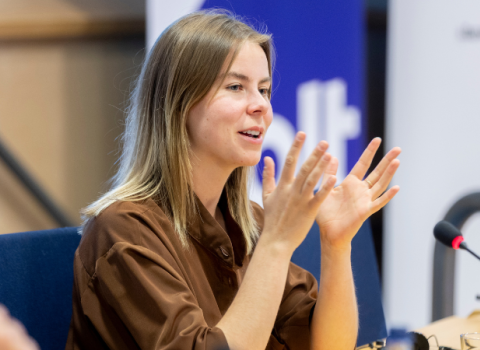Fusion research company Tokamak Solutions has secured £170,000 of equity investment from Sir Martin and Lady Audrey Wood, the Rainbow Seed Fund, Oxford Instruments plc and investor members of the Oxford Early Investments network.
The funding will enable Tokamak Solutions to complete the design of its novel fusion neutron source - a super compact tokamak. Applications for the new technology range from the clean-up of nuclear waste, which could make safe nuclear power a reality, to the production of medical isotopes used in the diagnosis and treatment of diseases such as cancer and, in the longer term, as part of a zero carbon method for large scale hydrogen production.
The company has also just been awarded a €110,000 contract from ITER, the next generation international fusion energy research reactor, to advise on diagnostics for measuring neutron emission and fusion power.
Fusion scientists around the world are designing methods to harness fusion as an energy source that typically involve the construction of huge, multi-billion pound facilities. The Tokamak Solutions team located at Culham, Oxfordshire is focused on creating a super compact, but powerful, fusion neutron source and has already filed patent applications for the initial design of its tokamak.
The concept of ‘fusion for neutrons’, the basis of the company’s technology, is the brainchild of Dr Mikhail Gryaznevich and Alan Sykes who have worked on fusion research at Culham for 20 years. They realised the success they had achieved with colleagues at Culham in creating two ground-breaking spherical tokamaks held the key to unlocking the potential of fusion neutron sources. In late 2009, they co-founded Tokamak Solutions with Dr David Kingham, former managing director of Oxford Innovation, who helped them formulate a business strategy to commercialise the technology.
Alan Sykes, technical director at Tokamak Solutions, said: “The fusion process produces an abundance of neutrons and by using the spherical tokamak this can be done very efficiently. This means that a fusion neutron source, with a wide variety of applications, can be realised on a much smaller scale than a fusion energy source of the ITER type.”
Dr Kingham, now chief executive of Tokamak Solutions, said: “We are delighted to have secured the investment we need to progress the development of this bold new technology. Our initial focus is on the plasma physics and neutron research markets and our new group of investors has already provided significant added value in addition to their investment. For example, Oxford Instruments has advised on potential applications in relation to superconducting magnets while the Rainbow Seed Fund has assisted with introductions to potential users of neutrons.”
Beyond the initial development stage, Tokamak Solutions’ fusion neutron source offers a viable way to clean up nuclear waste. Neutron bombardment can potentially deal with all radioactive nuclear waste, but one of the most promising applications lies in using neutrons to destroy the ‘minor actinides’ that are particularly problematic for burial.
Dr Gryaznevich, chief scientific officer at Tokamak Solutions, explained: “Burying minor actinides is expensive and risky as they undergo fissile decay over thousands of years, releasing heat and radioactive fragments, making them difficult to contain. During the past 30 years, many scientific papers have been written about the potential transmutation of minor actinides, but our super compact fusion neutron source is the first system based on currently available technology with the potential to produce the neutrons required for this clean-up.”
Additional applications for fusion neutron sources include: production of medical isotopes - where there are currently worldwide shortages; scientific research - where there is significant unmet demand; and in the testing of materials components for future fission and fusion energy reactors - where international facilities currently fall short of requirements. In the longer term, fusion neutron sources may prove valuable as part of an efficient, zero carbon method for large scale hydrogen production and as the core of a fusion-fission hybrid (or sub-critical) reactor that will breed its own fuel and destroy its own waste.
Tokamak Solutions has assembled a distinguished scientific and environmental advisory board chaired by Lord Julian Hunt FRS, who speaks regularly in the House of Lords on the potential of fusion-fission hybrid reactors. Lord Hunt said: “The potential of fusion-fission hybrids has been recognised internationally for many years, and the Tokamak Solutions’ design of fusion neutron source is a big step towards realising this potential. The result should be cleaner, safer, zero carbon, nuclear power.”
Jonathan Flint, chief executive of Oxford Instruments plc, was one of the first to spot the potential of Tokamak Solutions’ neutron source technology. He said: “Oxford Instruments has a long established track record supplying tools and consultancy services to the fusion community and we are delighted to support a project that has the potential to offer significant benefits to the industry.”
Mark White of the Rainbow Seed Fund has worked closely with the Tokamak Solutions team over the last year. He said: “Tokamak Solutions is a great example of a business emerging from world-leading research and we are pleased to back the next step in the development of their innovative technology.”
Chris Baker, manager of Oxford Early Investments network, said: “We were pleased to assist Tokamak Solutions to secure the crucial investment to complete the initial design for their new tokamak. This technology could potentially provide a cost-effective method to harness fusion energy and generate safe, pollution-free power.”




 A unique international forum for public research organisations and companies to connect their external engagement with strategic interests around their R&D system.
A unique international forum for public research organisations and companies to connect their external engagement with strategic interests around their R&D system.